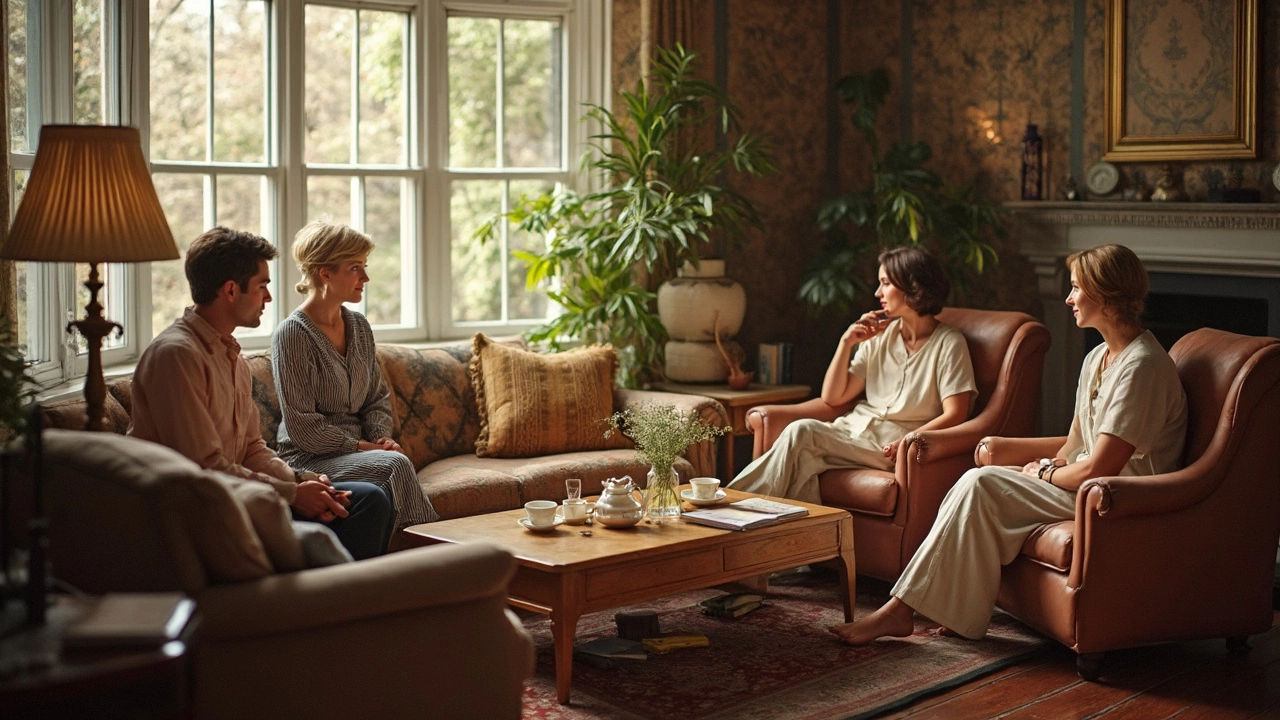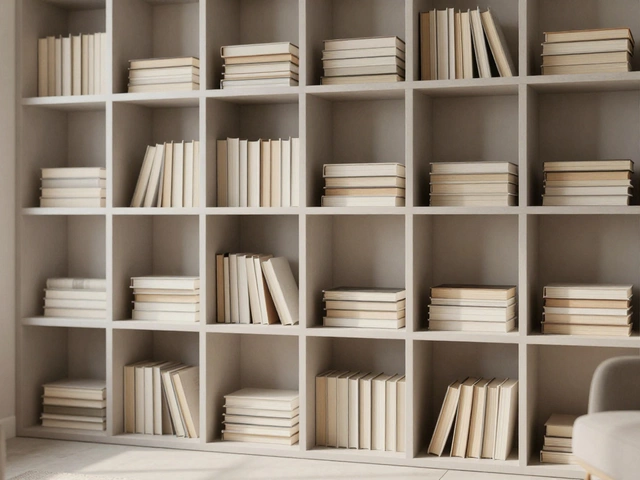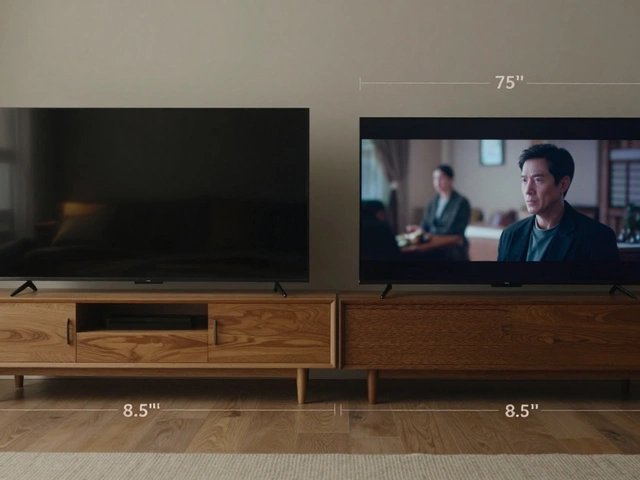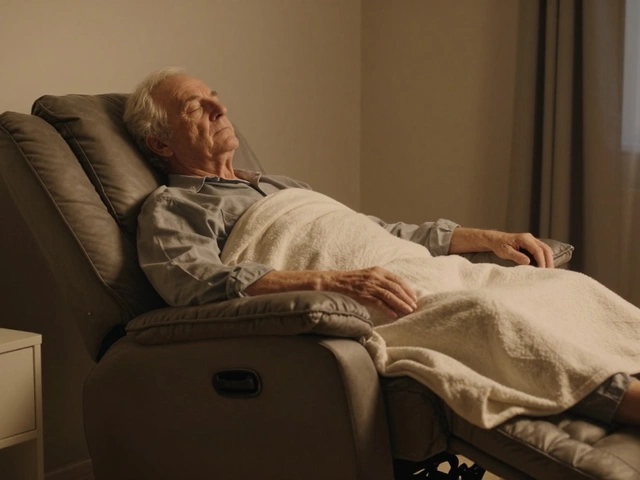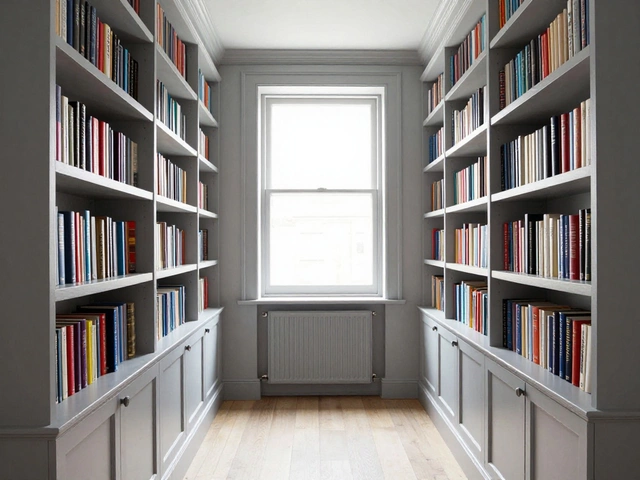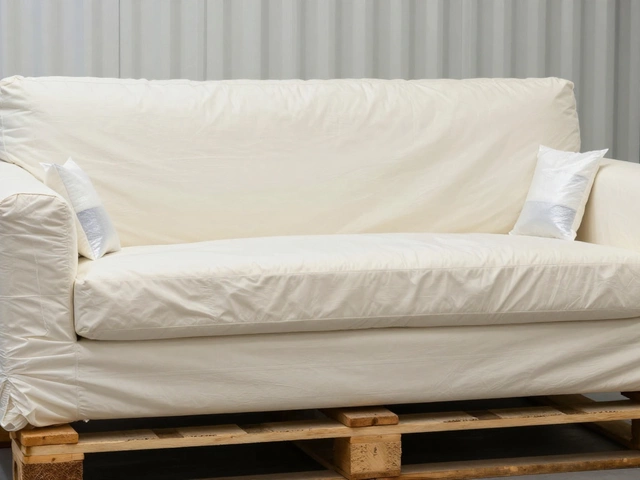Go to any furniture store and what’s the centerpiece of nearly every living room display? Yep, a coffee table. But nobody ever stops and asks if it’s truly necessary or just something we all accept as a default. Do you need one, or is it a leftover tradition that doesn’t suit how you actually use your space?
Think about your daily routine. If your living room turns into a place for board games, snacks, remote controls, and feet-up relaxing, a coffee table can feel almost non-negotiable. But if you’re working with a small apartment—or you spend more time tangled in a pile of blankets on the couch than balancing drinks on a table—it might just be extra clutter.
Most people treat the coffee table like a parking spot for everything: cups, mail, the odd sock, or last week’s magazine. But there are smarter ways to use your living room if you really size up what you need (and how you live). The rest of this article will break down where a coffee table shines, when it just eats up space, and what you can use instead if you’re not sold on the idea. Ready to challenge a living room tradition?
- What Does a Coffee Table Actually Do?
- When a Coffee Table Makes Sense
- Times You Can Ditch the Coffee Table
- Smart Alternatives for Any Space
- How to Nail the Look Without a Coffee Table
What Does a Coffee Table Actually Do?
A coffee table isn’t just a flat slab where you drop your keys and call it a day—it can be surprisingly multifunctional in the living room. Its main job is simple: it gives you a spot to set things down. Drinks, snacks, remotes, phones, tablets, and that stack of takeout napkins you never use all tend to pile up on the coffee table, making it a bit of a command center within arm’s reach of the couch.
But there’s more to it than just holding stuff. Coffee tables often anchor the whole living room setup. Designers use them to help pull together sofas, chairs, and rugs, so the space looks intentional instead of random. Without one, your living room furniture can sometimes look like it’s floating aimlessly.
Let’s get specific about what this means day to day:
- Holds food and drinks so you’re not juggling pizza on your lap during movie night.
- Makes a convenient drop zone for small items, so they don’t end up lost in couch cushions.
- Doubles as a play surface for kids. Board games, LEGO sets, art projects—they all end up here.
- A lot of people use coffee tables for storage. You’ll see versions with shelves or drawers for everything from blankets to video game controllers.
- Sometimes, it’s just there to show off decorative trays, plants, or your most impressive coffee table book.
In fact, a 2023 survey by Apartment Therapy found that over 70% of people place their main living room storage items (like remotes and magazines) on or in the coffee table. This makes it one of the most-used pieces of furniture in the average American living room.
At the end of the day, your coffee table is a utility player. It’s not flashy, but when it pulls its weight, it keeps life running smoothly, especially in a busy household.
When a Coffee Table Makes Sense
Sometimes, a coffee table just fits the bill. If you host people often, play board games, or eat in front of the TV, having a handy surface grabs real value fast. In a survey by Apartment Therapy in 2024, 73% of people said they use their coffee table daily. That’s hard to ignore—it’s not just for show.
Here are a few scenarios where a coffee table isn’t just a nice-to-have, but a serious workhorse:
- Social Hangouts: Coffee tables make snacks, drinks, and game nights easy. Ever try balancing a bowl of popcorn on your knee while turning to chat with someone?
- Storage Central: Some models come with shelves or drawers, perfect for hiding remotes, game controllers, or any clutter you want out of sight fast.
- Kid-Friendly Zones: For families, a soft-edged coffee table can be a life-saver for coloring, toy parking, or sippy cup pit stops.
- Show Off Your Style: Let’s be real—your style says a lot about you. Coffee tables can highlight your taste way more than leaving a bare floor.
If you want to look at the numbers, check out this table with real living room stats:
| Living Room Use | Percentage Needing Coffee Table |
|---|---|
| Board games / Cards | 86% |
| Regular entertaining | 78% |
| Streaming/eating on couch | 67% |
| Display/home decor | 55% |
| Minimalist lifestyle | 28% |
So, if you fall into any of those top groups, a coffee table isn’t just decoration—it’s solving regular, real-life problems you probably deal with daily. Otherwise, keep reading for some options that might fit your space even better.

Times You Can Ditch the Coffee Table
Not every living room needs a coffee table. In fact, getting rid of it can free up valuable space—especially in smaller homes or apartments, where every inch matters. If you’re constantly bumping into your table or moving it out of the way just to get comfortable, it’s probably not pulling its weight.
One of the biggest reasons people skip a coffee table is having kids or pets. Low tables end up as magnet for sticky fingerprints, stray toys, and wild play. Lots of parents swap out their coffee tables for soft ottomans or just stick with an open floor. It keeps things safer and way easier to clean up after a long day.
Hosting style plays a role as well. If your living room is more about casual hangouts or movie marathons than formal entertaining, you might never use that central surface. Some folks prefer arranging smaller end tables next to sofas or chairs instead, so guests always have a spot to set their drinks—without a big piece hogging the middle.
- Trying out floor seating, poufs, or beanbags? Ditching the central table opens up your options and makes the space feel way more relaxed and flexible.
- If your living room doubles as a workout zone, creative studio, or kids’ play space, removing the coffee table turns it into a true multipurpose area. You can spread out for yoga, crafting, or building epic blanket forts without rearranging furniture constantly.
- Minimalist design fans often skip coffee tables entirely, letting their living rooms breathe with open floor space. This approach works especially well in modern apartments, where having less furniture creates a cleaner, airier vibe.
In short, the only real rule is that you should be able to move around easily and use your space for what you actually like to do. There’s no decorating police coming to check for a coffee table, so if it’s not working for your life, don’t hesitate to ditch it.
Smart Alternatives for Any Space
If the classic coffee table isn’t cutting it or your space is too tight, you’ve got plenty of options that handle the job—sometimes even better. The trick is figuring out what you need: a place to set stuff down, extra seating, more storage, or maybe just something easy to move around. Here are some solid choices that work for small apartments or huge living rooms.
- Nesting tables: These are smaller tables that tuck under each other, so you can pull them out when you need extra surfaces. Super helpful in tight spots or when friends come over and everyone needs a spot for their soda. Way more flexible than a big one-piece table.
- Ottomans: Go with a sturdy one—plenty are made to hold trays or even your feet. You get bonus points if it opens up for storing blankets, controllers, or books. It’s like getting a table and a storage box in one.
- Side tables: Drop one (or two) on either side of the couch. You can move them wherever you need, and they take up less real estate. Plus, they don’t block foot traffic if your living room has a weird shape.
- Storage benches: If you usually need both extra seating and a place to stash stuff, storage benches are a genius fix. They double as a table in a pinch and give you somewhere to hide toys, shoes, or random clutter when guests show up.
- Tray tables: These cheap, folding tables aren’t glamorous, but they’re super practical for snacks, laptops, or game night. Tuck them away in a closet when you don’t need them.
It’s not just about style—sometimes you actually save space or make the living room work better. Multi-purpose furniture is having a moment, especially in smaller homes and apartments. A survey from the American Home Furnishings Alliance in late 2023 showed that nearly 39% of buyers under 35 prefer flexible furniture over traditional, single-use pieces like fixed coffee tables.
| Alternative | Main Benefit | Ideal For |
|---|---|---|
| Nesting Tables | Space-saving, modular | Small apartments, flexible seating |
| Ottoman | Extra seating & storage | Families, movie nights |
| Side Tables | Easy to move, low profile | Awkward layouts, quick access |
| Storage Bench | Hidden storage, dual use | Decluttering, extra seating |
| Tray Tables | Portable, stowable | Dorms, parties, small rooms |
Most of these options are easy to swap out or rearrange. You can always mix and match a couple of them instead of cramming in one big table that dominates your living room. Think about what fits your daily life, not just what looks good in a showroom.

How to Nail the Look Without a Coffee Table
Getting rid of the usual coffee table doesn’t mean your living room ends up looking weird or unfinished. Actually, without a big chunk of furniture in the middle, you can open up space, help traffic flow, and add a cleaner vibe. So, how do you keep things practical and make the room still feel pulled together?
First up: group smaller pieces. Try using a pair of ottomans or a set of nesting tables. They’re easier to move and work double duty—ottomans handle snacks, laptops, or even an extra seat if you’ve got a crowd, while nesting tables tuck away when you want more floor space. No hard rule says everything must match perfectly; mixing materials or shapes can look more relaxed and interesting anyway.
Think about storage. You probably don’t want your remotes and phone chargers rolling all over the place. Instead of a coffee table, stash these in a basket or a slim side table with drawers. Those magazine racks built into side tables? They’re made for chaos control. If your space is super tight, wall-mounted shelves keep stuff off the floor and give you room for plants, art, or speakers.
Check out this quick comparison of common alternatives and their main benefits:
| Option | Main Perk | Best For |
|---|---|---|
| Ottoman | Extra seating & storage | Kids, casual hangouts |
| Nesting Tables | Flexible, tuck away easily | Small spaces, versatility |
| Stools or Poufs | Easy to move, fun shapes | Lounging, late-night snacks |
| Side Tables | Storage, fits tight spots | Tech gear, book lovers |
| Wall Shelves | Keeps floor clear | Minimalist, tiny rooms |
Don’t ignore the ‘anchor’ effect—something that grounds your sofas and chairs. A bold rug can do this job. It adds color and keeps the seating from looking like it’s just floating. Toss in a tray on an ottoman, or use a big basket for throws; you’ve got function without the classic table in the middle.
If you like to host, stack some sturdy floor cushions in a corner. Pull them out for guests to set down drinks or to kick back. Your friends won’t miss the coffee table, and you get to style things your way.
- Group smaller pieces like stools or cubes for a casual, party-friendly look.
- Use a statement rug as a visual centerpiece.
- Add trays for easy spill-proof snack zones (and fast clean-up).
- Keep baskets close by for blankets, remotes, and pet toys.
Bottom line: There’s no single right way to set up your hangout zone. Skipping the coffee table can make your room work better for you—and look good doing it.

